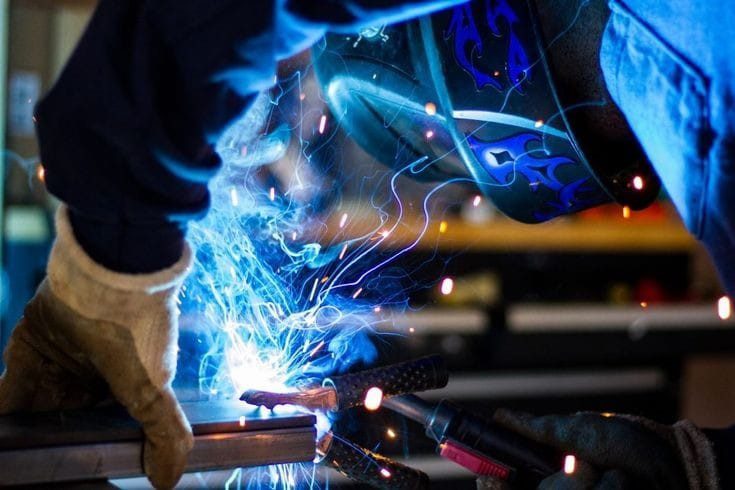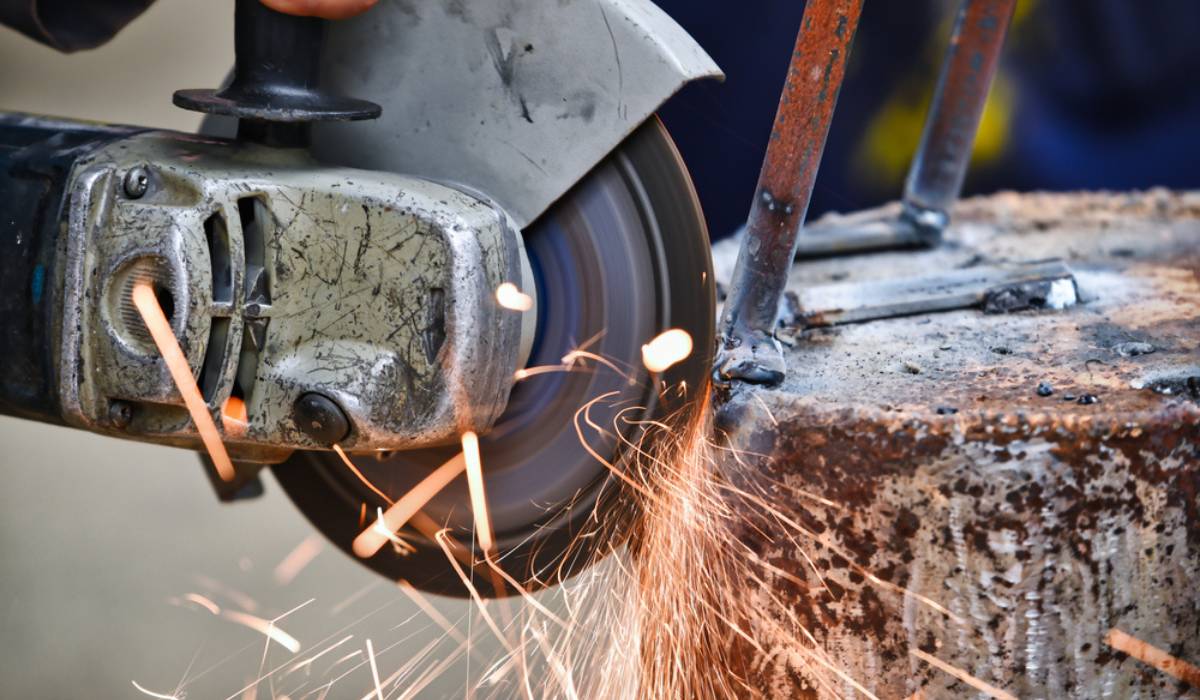Welding is a method of joining metals by melting them at high temperatures and then cooling them. The joining is done by providing heat to the metals to be connected until they reach a molten condition; then, a filler material is introduced, and the two parts are thus joined together. It helps to glue the two pieces together when it cools, providing a sturdy junction.

Source: Pinterest (KP Fabrication & Welding)
See also: What are the different types of welding defects?
Due to extreme conditions, the process requires precision and expertise. It is a cost-effective and reliable way of joining metals.
In this article, we will provide you with the knowledge required to perform aluminium welds.
Why choose aluminium for welding?
In comparison with other metals, aluminium reacts more readily with oxygen and is highly exothermic and thus provides sufficient heat to melt the metal. Furthermore, aluminium is light in weight, it is ideal for welding in the automobile industry, where weight is crucial. This process is used in a variety of industries, such as construction, automobile, aircraft, shipbuilding, etc.
Aluminium welding: Safety precautions to follow
Caution: During welding, you may be dealing with dangerous materials. Hence, wear the necessary protective gear and take all safety precautions.
The safety gear includes:
- Safety glasses with shields to protect your eyes and face from sparks.
- Welding helmet
- Flame-resistant clothing
- Welding gloves made of flame-resistant material
- Fully covered footwear
Make sure you are wearing the correct PPE for the job. Keep in mind that the environment in which you are working should be ventilated to reduce exposure of welding fumes and gases to you.
Aluminium welding: Materials required
- Aluminium pieces which you want to join
- Welding machine/gun
- Wire brush to remove unwanted particles
Aluminium welding: Procedure
Welding is quite a difficult task, but if one follows the instructions carefully, it can be accomplished with minimal risk. Safe and effective results are achievable when proper safety precautions are taken.
Clean the surface: To properly weld aluminium surfaces, you need to clean the surface to remove any dirt, oil or oxide layers that may have formed. Try to use a stainless steel brush. You can use sandpaper as an alternative. Chemical cleaners or aluminium cleaning solutions may be used if necessary.
Alignment: The next step to be done is to align the aluminium pieces in the order that they are to be welded. There should be no gaps left.
You should hold the welding gun about 45 degrees towards the direction you are welding. Try to maintain a constant speed to create a uniform and smooth weld. Angle your wrist slightly to the side while welding. This will help you create a more precise weld. Avoid stopping in between, as it will leave gaps in your weld. Make sure to keep a proper distance from the weld area.
Finishing: When the weld is complete, look out for any defect or gap. If needed, clean the piece to make it look polished.
Remember to follow the appropriate safety precautions and make sure the machine is in good working condition. Also, whenever you are unsure about the working of a tool, seek guidance from a professional.
FAQs
I am new to welding. Can I try it?
If one follows all the safety rules and understands the instructions, then welding can be tried.
In what environment should I weld?
You should weld in an area with good ventilation. Do not weld near flammable materials.
Can I weld indoors?
Yes, you can. But you should follow the utmost precautions.
If I find any gaps after welding, what should be the next step?
You should first clean the weld and then start welding again.
| Got any questions or point of view on our article? We would love to hear from you. Write to our Editor-in-Chief Jhumur Ghosh at jhumur.ghosh1@housing.com |






